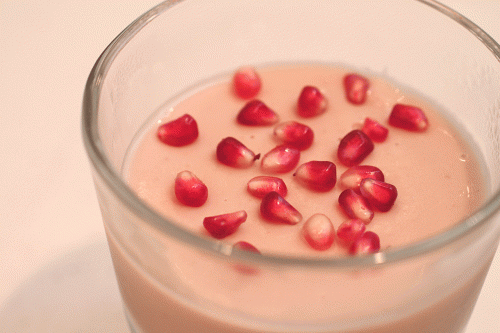ROSE-SCENTED FALOODA
This weekend kicked off the start of Eid Al Adha (or Feast of Sacrifice). For those that are unfamiliar, it's the second of the two Muslim holy holidays and is considered the most holy, the other being Eid Al-Fitr, celebrating the end of Ramadan.
Although this holiday is considered the "Salty Eid" with savoury dishes being the mainstay of the celebration, it made me think about a sweet drink I grew up having at the sweet shops when I travelled. Falooda is a rose-scented, sweet milk that is flecked with sweet basil seeds (tukmaria), a cornstarch vermicelli and ice cream. It's such a distinct taste memory, an Indo-Pakistani bubble milk tea of sorts for a reference point, and was always a treat.
I thought it would be fun to recreate and also do it a bit more naturally (to give to my little one!). I used a rice vermicelli because falooda sev, the traditional cornstarch noodle, was too hard to find. In lieu of a pre-fab, pre-sweeted rose syrup, I made my own to control for sweetness, but, by all means, it tastes great using either. Finally, I used a touch of kewra essence because that flavor is part of my childhood, but it's totally optional (and also not the easiest to find).
Basil seeds, by the way, are very similar to chia seeds. When you soak them, they swell and become gelatinous. Like chia, they are considered a superfood, but, theoretically, you could sub in chia if they are too tough to find.
Serves 4
2 teaspoons basil seeds
1/3 cup white or brown rice vermicelli, broken into 1- to 2-inch pieces
2 cups milk (whole, skim, almond, coconut)
3 tablespoons rose syrup*
1 1/2 tablespoons kewra essence (optional)
4 medium scoops ice cream (vanilla, honey, pistachio, or any flavor you think fits here)
In a small bowl, cover the basil seeds with water and let sit 5 to 10 minutes. They will swell up, so you may need to add a bit more water. Strain.
Cook the vermicelli per the package instructions - usually about 3 minutes in boiling (unsalted!) water. Strain and transfer to an ice bath (water and ice) to cool down immediately and stop cooking. Strain once cooled.
To the milk, stir in the rose syrup and kewra essence, if using.
Divide the basil seeds and vermicelli between 4 glasses. Top with the rose milk and finish with a scoop of ice cream. Serve immediately with a straw and a spoon!
*For the rose syrup, in a medium pot, bring 1 1/2 cups water, 1 cup dried rose petals and 1 cup white sugar (if using a natural brown sugar like palm or coconut, change this to 3/4 cup) up to a boil. Remove from the heat, cover, and let steep until it cools to room temperature. Strain, using the back of the spoon to press through as much of the liquid (and flavor) from the rose petals as possible. Add a few tablespoons of rose water to intensify the flavor if need be - it all depends on the strength of the rose petals you're using.









